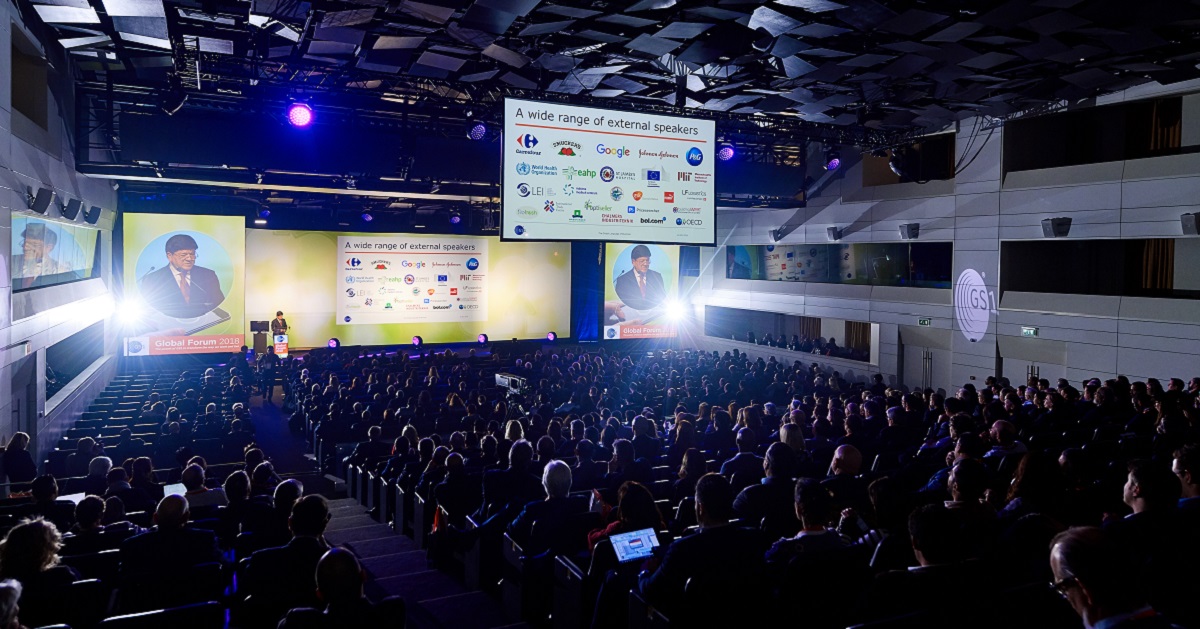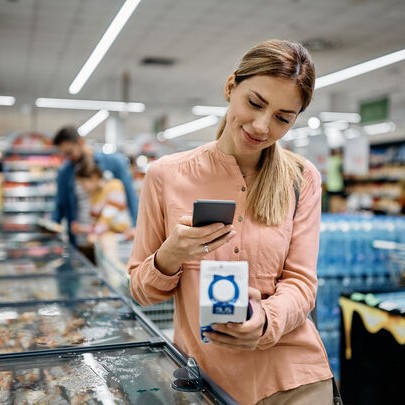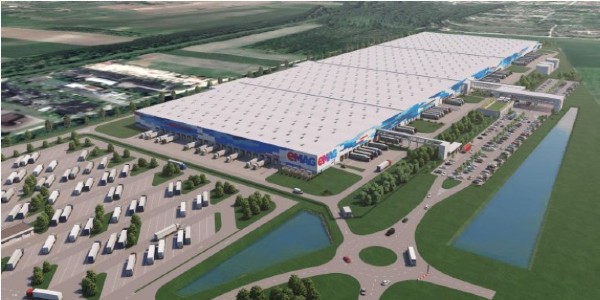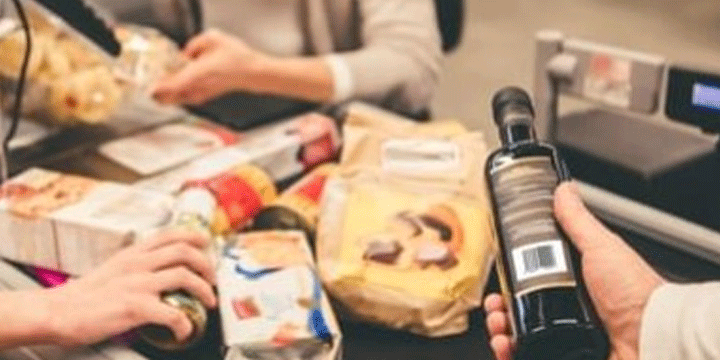March 24, 2023 Industry news
Back in the early 1970s, a retail industry committee came together to develop and adopt a universal product code. This became the Global Trade Item Number (GTIN), the number you see under barcodes that is now used to identify billions of products across the globe.
50 years on, over 10 billion GTINs are now scanned each day, providing greater trust, transparency and efficiency for brands, retailers and consumers alike. However, the world has changed a great deal since those first pioneering retailers agreed a common way of doing business. Digital transformation has rapidly driven the demand for quality data as consumers seek out more information on the products they buy, from what they are made of and where they are produced, to how best to use and recycle them.
On top of this, increasing legislative demands and the sheer volume of data produced has left some businesses struggling to keep up.
A global transition
That is why GS1 is now supporting a global transition to a single, data-rich 2D code that allows everything, from scanners to smart phones, to easily obtain information about a product. A single code that has the power to improve supply chain visibility, ensure product safety and bring a wealth of information to consumers, both at home and in store.

GS1 Global Forum 2023
Earlier this year at the GS1 Global Forum in Brussels, leading figures from across industry came together to explore how this transition could shape the future or retail.
During the Forum’s retail plenary, a variety of industry experts explored the many ways that 2D barcodes can unlock infinite possibilities for everyone.
Below, we have summarised some of the valuable insights shared by representatives from two of the most well known businesses in the world.
Procter & Gamble: building connections and reducing friction
Leading an organisation of more than 650 P&G IT professionals and over a thousand partner resources, Alfredo Colas has first-hand experience of how 2D barcodes can create direct connections between consumers and brands in ways that were never possible before. As well as sharing his experiences, he also explained why it is essential for brands, no matter their size, to get started on their 2D implementations as soon as possible.
Whether it be changing a baby with pampers, washing clothes with tide or ariel, or shaving with Gillette, Procter & Gamble products are used daily by over five billion consumers worldwide.
Building strong connections between their brands and consumers is very important to P&G. They define their purpose as providing branded products and services of superior quality and value that improve the lives of the world’s consumers, now and for generations to come.
They deliver on this purpose via innovation. To P&G, innovation is about solving the everyday problems of real people as they believe there is nothing is more important than understanding, exploring and fixing the friction in consumer lives.

Alfredo Colas, senior vice president of IT, data & analytics and Go-To-Market, Procter & Gamble
That is why making the transition to 2D barcodes is a top priority but, while this migration presents huge opportunities, Alfredo explained how it must be approached “through the eyes of consumers”.
“Collectively, we must understand how we can leverage this opportunity to enhance engagement” he said. “How do we meet their increased expectations? How do we solve their problems? How do we create new, better experiences?”
Alfredo demonstrated this customer focused approach using Gillette Intimate, a product that is already on the market, as an example.
As a recent new product, many consumers needed educating on how to correctly use Gillette Intimate and 2D barcodes offered a perfect solution. By printing 2D codes embedded with the GS1 Digital Link standard on each pack, P&G were able to provide Gillette consumers with a seamless experience that took them directly from interacting with physical packaging, to dynamic, easy to follow digital content that clearly demonstrated how best to use the product.
For Alfredo and his team, this was just the beginning. P&G’s categories are now looking to tailor relevant experiences to their consumers’ specific needs. In some categories, this may be focused on sustainability, in others on ingredient transparency, traceability and much more.
“We are looking at this as an opportunity to make our products more accessible to all consumers through 2D barcodes, including those with disabilities who can find it difficult to access information from a physical label” he said.
“At the same time, we believe that 2D can create a more integrated supply chain experience through that very same GS1 Digital Link as we are now able to put all relevant information into one single code.
“For some products, this may only be a GTIN, for others it may be the lot or serial number. What is important is that each partner in the supply chain can read the same code and have access to the data they need, whether they are in a manufacturing plant, warehouse, store, or a consumer at home.”
Alfredo ended his presentation by telling the audience that the time for companies to begin their transition is now as 2D barcodes are here to stay and are becoming more prevalent by the day. “We all need to learn, pilot and evolve our systems and processes. Together, we can open the door to new digital experiences for our consumers and improved productivity for our operations” he concluded.
Carrefour: unlocking business value at every step of the supply chain
With over 13,000 hypermarkets, grocery and convenience stores in more than 30 countries, Carrefour is the eighth-largest retailer in the world by revenue. As head of merchandise and supply platforms, Garance Osternaud has spent the last 12 years digitalising the organisations core-business activities, from category definitions and data management to fulfilment and logistics optimisation.

Garance Osternaud, head of merchandise and supply platforms, Carrefour
Garance took to the plenary stage to share we she believes 2D barcodes can unlock business value for retailers of all sizes. She began by reminding the audience of what the retail world looked like before the barcode, when each tag needed to be checked, each price manually entered into a till, each total calculated etc.
Barcodes have obviously saved countless house at the checkout but, as Garance explained, their impact for retailers has been far more significant.
“Having to manually process orders, create price tags and apply them to each product is far from efficient, but it still puts in money in the register. But is it good money?” she asked. “How do you even know? You can’t accurately compare what you’ve sold versus the amount. You have no way to monitor which products come in and which go out. So it is fair to say that the barcode propelled retail into a new era, an era of control, traceability and data powered management, all with just a 13 digit GTIN.”
While it is undeniable that linear barcodes have shaped modern retail, Garance believes the transformation potential of 2D is even greater.
“Imagine what we could do with a 2D barcode embedding a URL for communication purposes, a GTIN obviously, but also viable parameters such as the batch number, best before date or serial number. We could do better retail. Better for us, but also for our business partners, employees and customers” she said.
“By allowing greater traceability throughout the supply chain, 2D barcodes can help consumers learn more about the provenance of their products. By simply scanning a QR code on pack they can discover where the product was produced, when it was produced, and by who. They can access new discounts, offers, promotions, recipe ideas and much more. They can interact with us, ask for more information and provide valuable feedback that will help us meet their needs.”
Garance is certain the industry will invent new ways of providing quality services and serving consumers with passion. Ways we cannot even imagine today, just like those who proceeded us could not have foreseen the many ways in which the barcode continues to improve our lives.
Carrefour is fully engaged in their transition towards the future of retail. They have already started digitally sharing traceability information with their customers and are looking for more pragmatic ways to scale up with standardised data and wider, stronger use cases.
“Yes, we may have to upgrade our production lines, our point of sales, our software, our ways of working, but together we can run powerful initiatives” she concluded. “We can write sensible guidelines for 2D and create a relevant model not only for business, but also for the people we care for most; our customers”.




